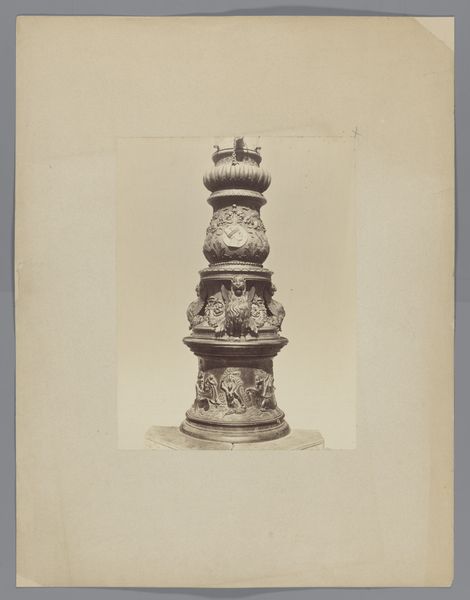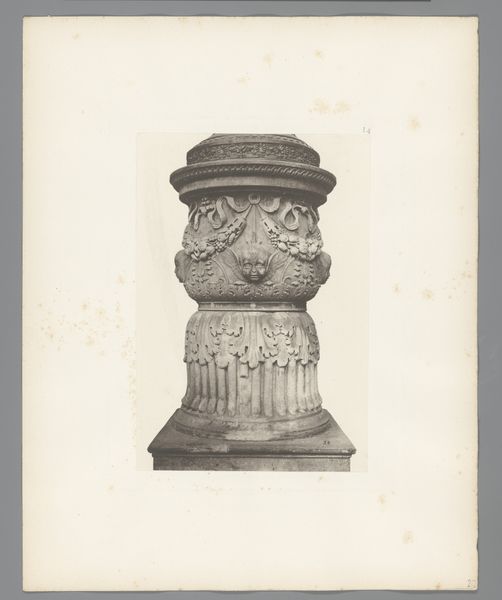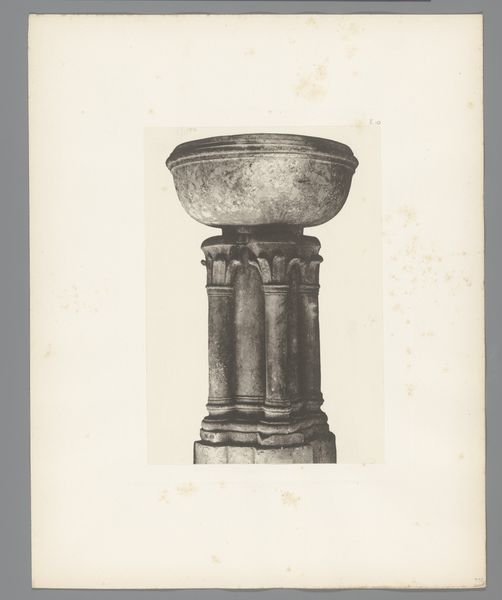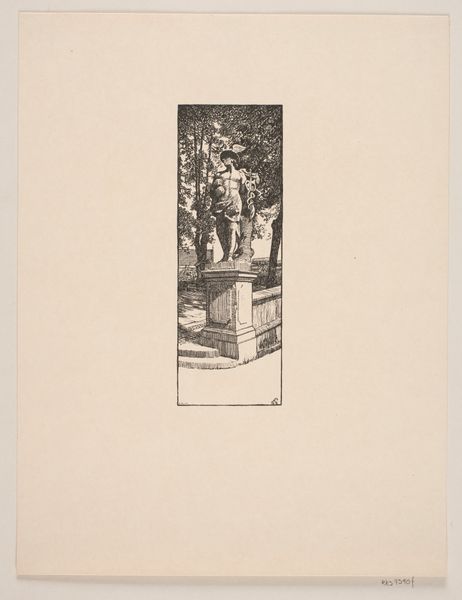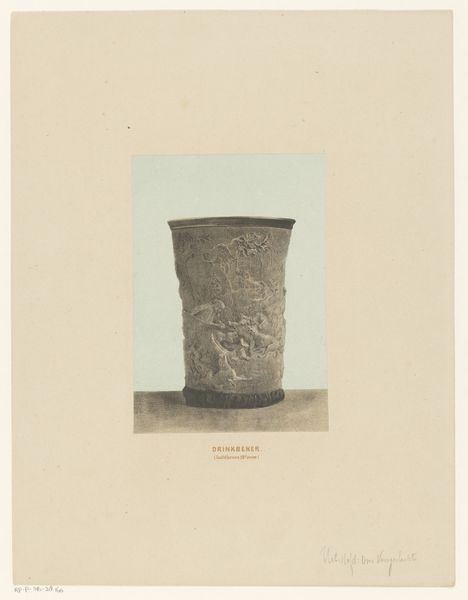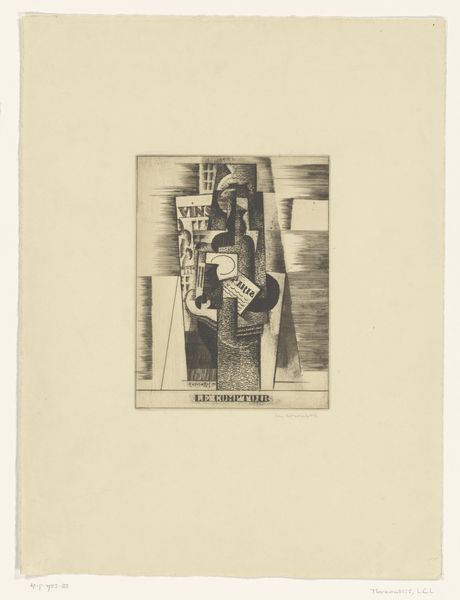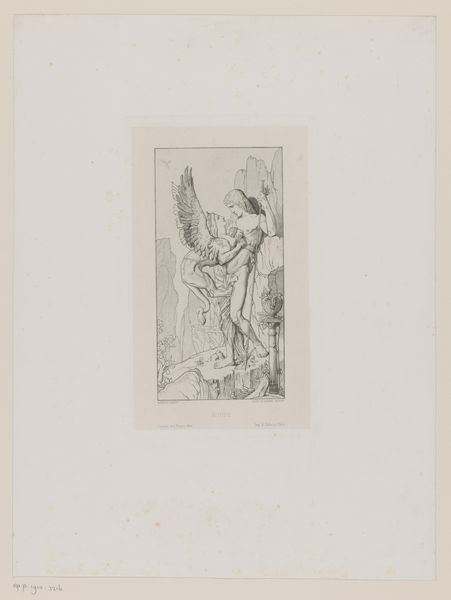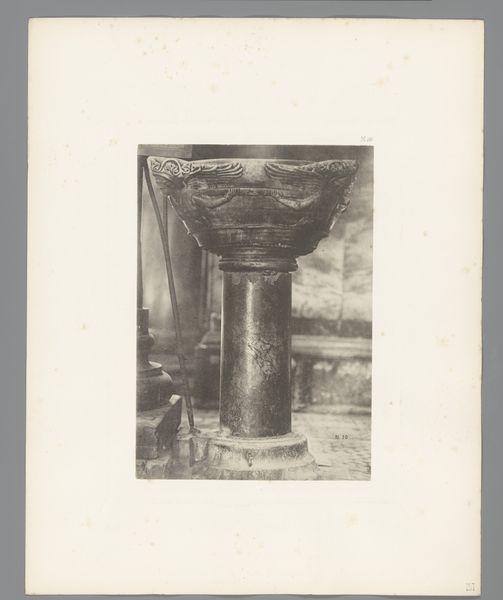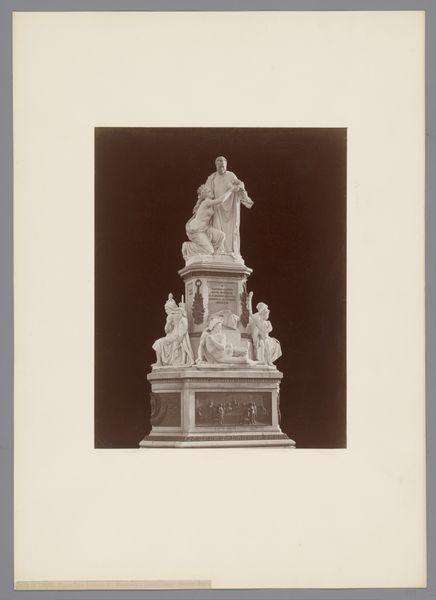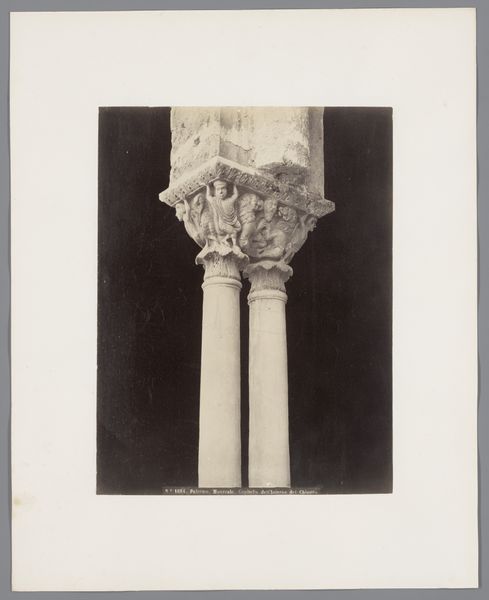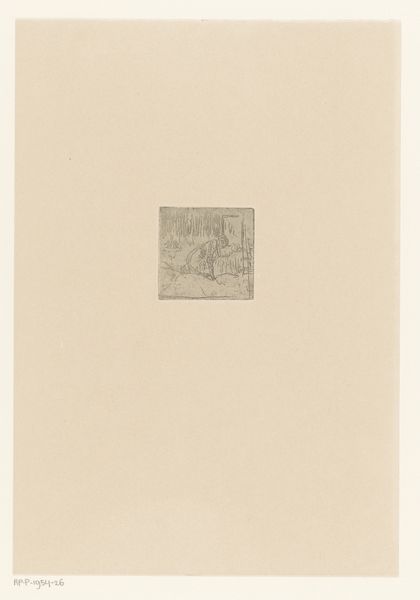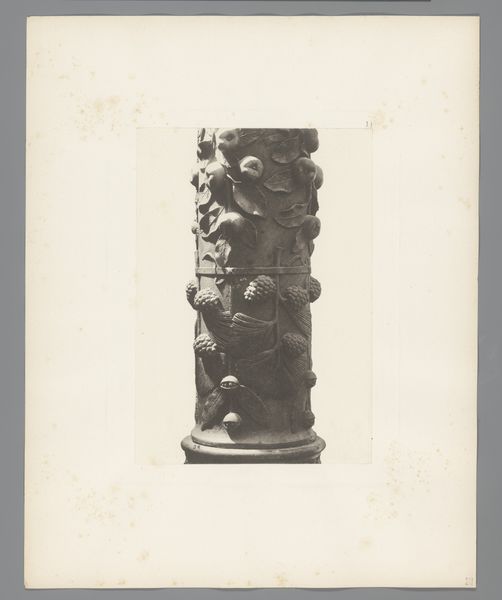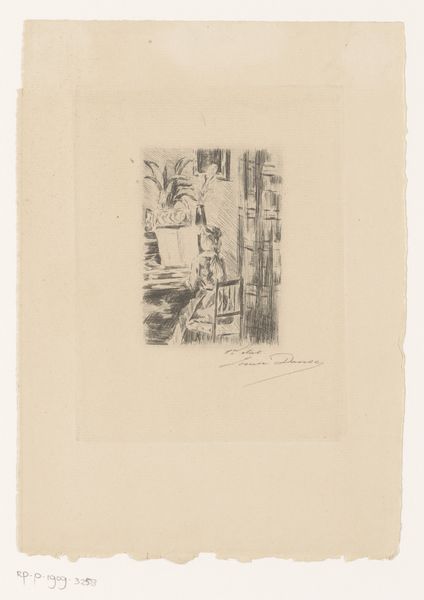
print, etching
# print
#
etching
#
japonisme
Dimensions: height 211 mm, width 151 mm
Copyright: Rijks Museum: Open Domain
Curator: Well, my first impression is, it's haunted, isn't it? This tin vase practically vibrates with secrets. Editor: You've picked up on something key here. This etching, "Gelakte tinnen vaas met om de hals een draak"—"Lacquered Tin Vase with a Dragon Around Its Neck"—was made by Félix Hilaire Buhot in 1883. It currently resides in the Rijksmuseum collection. Curator: A dragon clutching the vase... what do you make of it? A fierce protector, perhaps? Or is it strangling the very vessel it's supposed to guard? Editor: Considering the period and Buhot's involvement in Japonisme, it is worth noting that he was fascinated by Japanese art. Dragons, here, signal more than simple protection. They were potent symbols of power, wisdom, and even imperial authority adopted from Eastern cultures. Consider that Japan had recently opened to the West and had an economic presence through its art. Curator: Ah, so it's like this vase is showing off its newly acquired cultural riches! A bit of conspicuous consumption there, then? What an arrogant little dragon. It makes the piece playful even. Editor: Yes! There is an element of appropriation, certainly. This vase also exemplifies the broader decorative arts movement, seeking to elevate everyday objects with artistic merit. Look closely and you can see his interest in decorative styles and intricate surface textures that reflect the craftsmanship from Japan. Curator: And those lines! So precise and delicate. I love how Buhot makes the metal almost glow. Even the way the shadow of the base is rendered it seems to have taken inspiration from Japanese woodblock prints with their flattening of space. It is remarkable just how fresh it appears. Editor: His talent lies in how he fuses those traditions and, considering debates at the time, successfully brings Western art and aesthetics together with the cultural currents and social and artistic ferment in Japan. I see how those dynamics are captured in Buhot's rendition. Curator: A vase with a dragon isn’t just a vase with a dragon then! Buhot gave us more than meets the eye. He has etched something about a shifting, intercultural dynamic in Europe at the time. Editor: Indeed. Buhot challenges us to question where we position objects of both status and daily utility and what it is we choose to valorize across cultures. It continues to prompt so many exciting questions today.
Comments
No comments
Be the first to comment and join the conversation on the ultimate creative platform.
